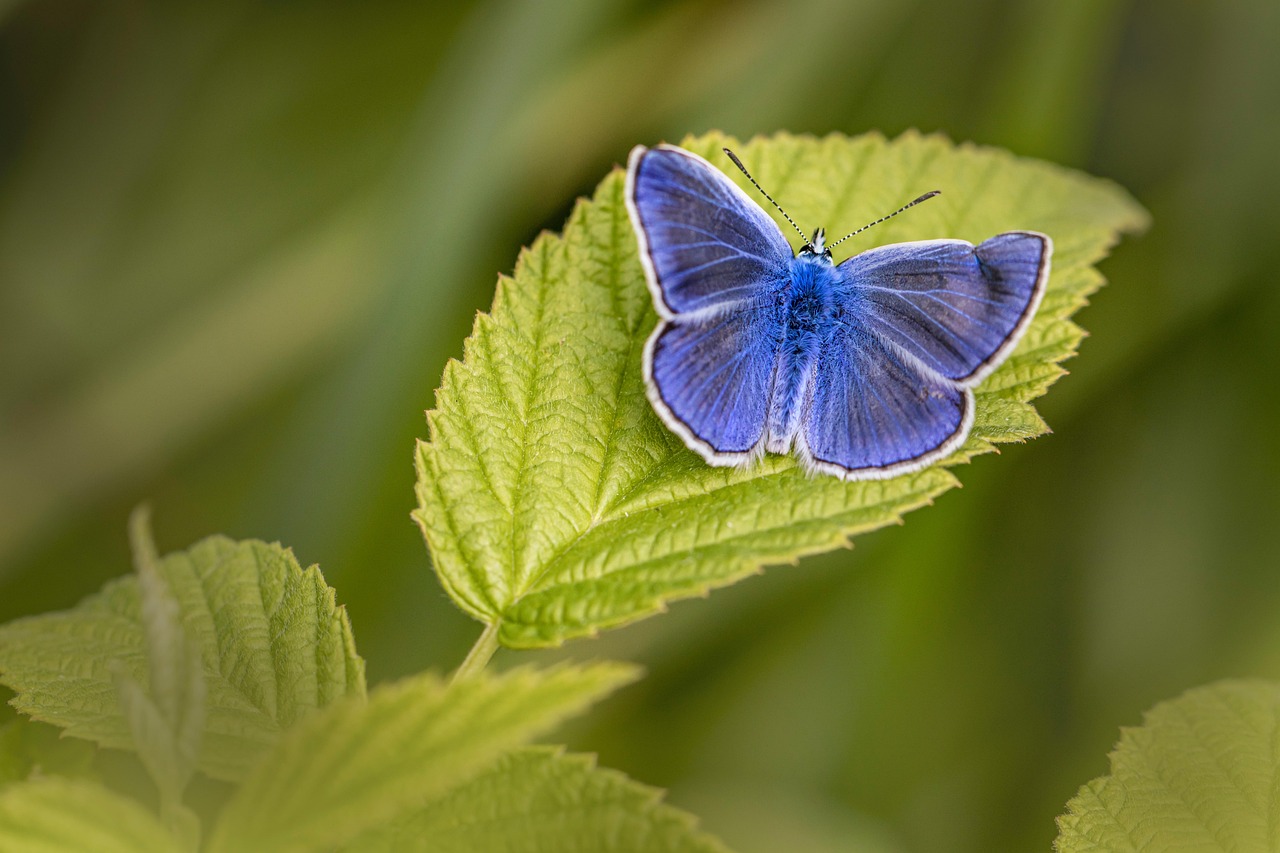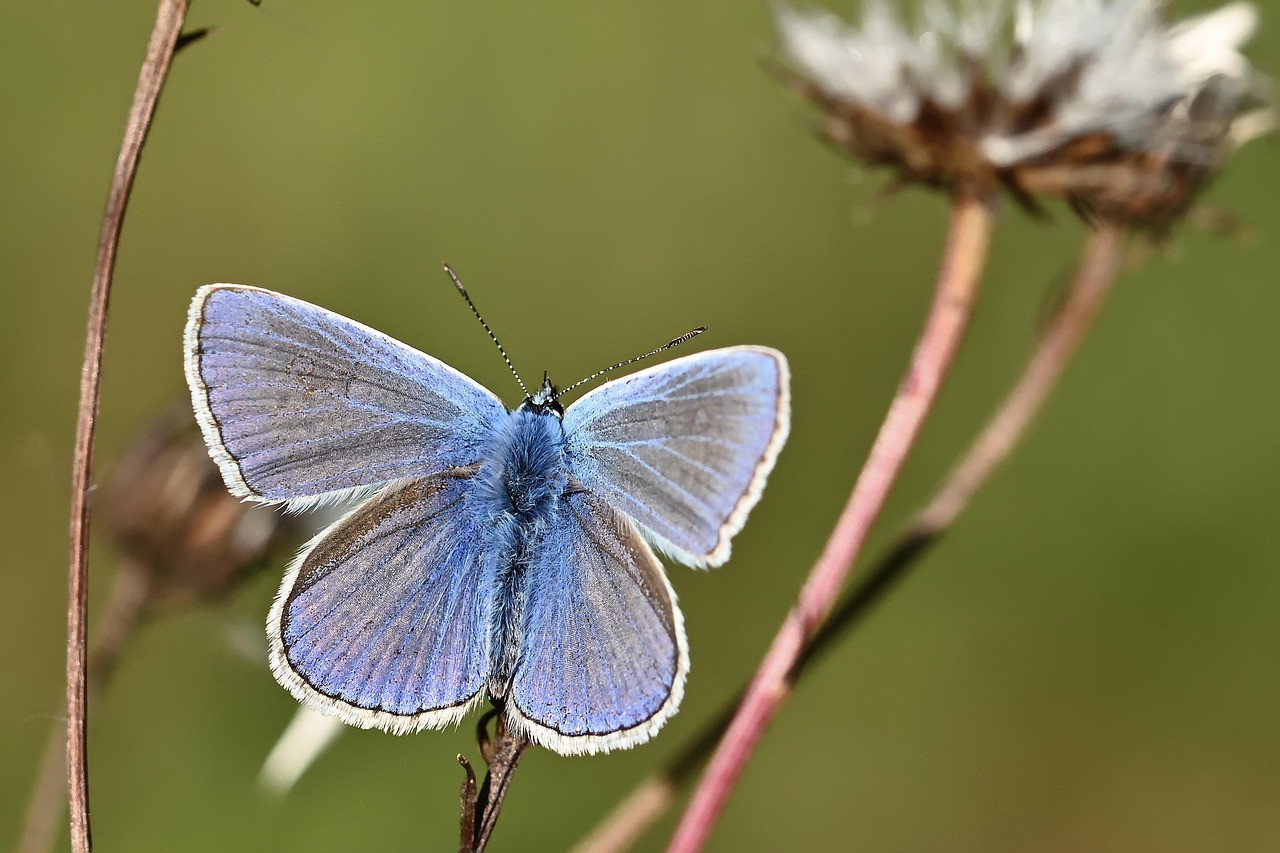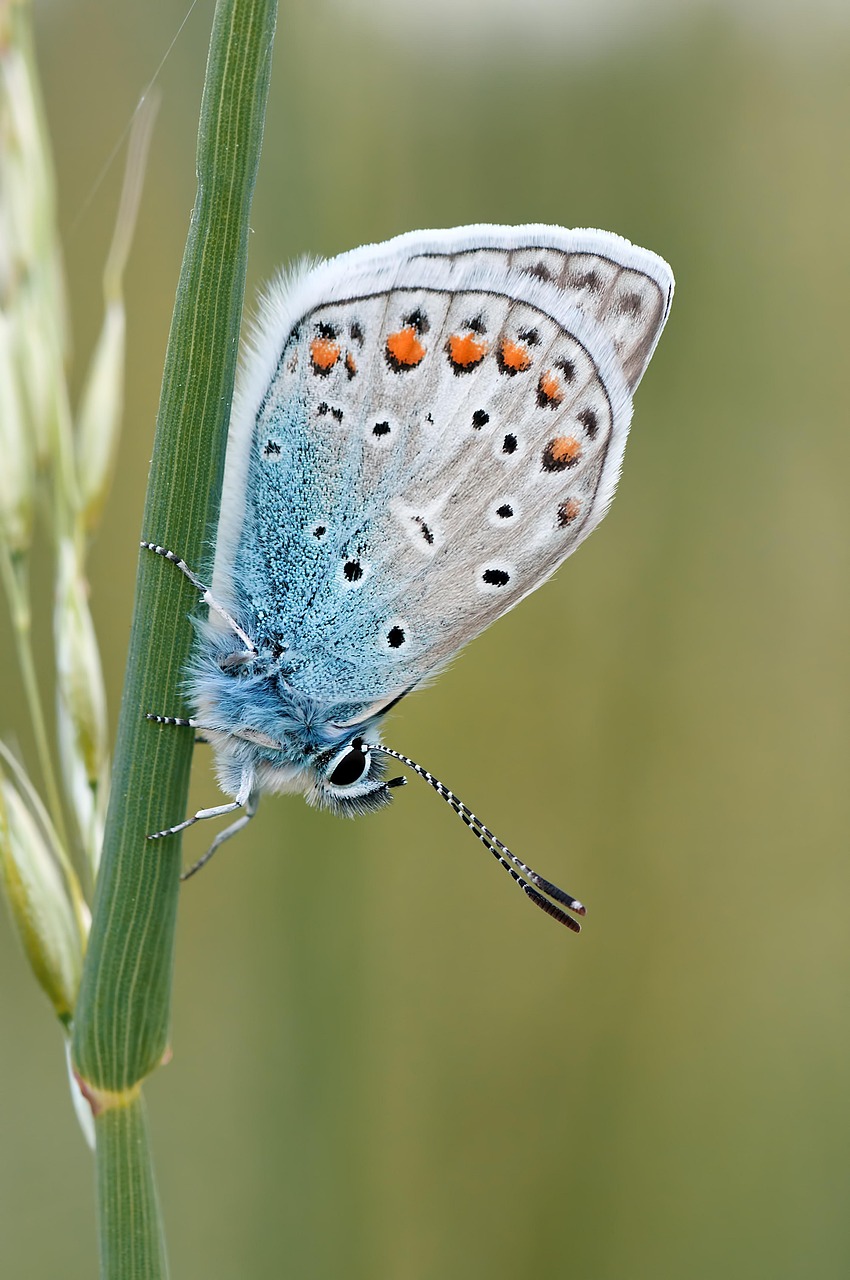The Karner Blue Butterfly primarily feeds on specific plant species during both its larval and adult stages. The caterpillars predominantly consume the leaves of wild lupine, while adult butterflies primarily feed on nectar from various flowering plants, including asters, milkweeds, and other native wildflowers.
Understanding the Karner Blue Butterfly

The Karner Blue Butterfly (Plebejus melissa samuelis) is a small, vibrant butterfly known for its striking blue color and unique lifecycle. This butterfly is primarily found in the northeastern United States and parts of Canada. The species has become endangered due to habitat loss and changes in land use. Understanding its diet is essential for conservation efforts.
The diet of the Karner Blue Butterfly varies significantly between its larval and adult stages. Each stage requires specific food sources that are critical for survival and reproduction. In this section, we will explore these dietary needs in detail.
Larval Food Sources
During the larval stage, the Karner Blue Butterfly is highly specialized in its dietary requirements. The caterpillars primarily feed on the leaves of the wild lupine (Lupinus perennis), which is the host plant for their development. This plant is crucial as it provides not only nutrition but also habitat for the larvae.
Wild lupine offers the necessary proteins and nutrients that caterpillars need to grow and metamorphose into butterflies. Without access to this specific plant, the larvae cannot survive. Therefore, the conservation of wild lupine populations is vital for the survival of the Karner Blue Butterfly.
Other Potential Larval Food Sources
While wild lupine is the main food source, there are some other plants that may serve as secondary or less preferred options for the larvae:
- Birdfoot Trefoil (Lotus corniculatus)
- Other species of lupine
- Occasional consumption of certain clover species
However, these alternative food sources do not provide the same level of sustenance as wild lupine. Therefore, they are not considered ideal for larval development.
Adult Food Sources
Once the larvae mature into adult butterflies, their dietary needs shift significantly. Adult Karner Blue Butterflies primarily feed on nectar from a variety of flowering plants. This nectar provides essential sugars that fuel their energy needs for flight, mating, and other activities.
Some of the preferred nectar sources for adult Karner Blue Butterflies include:
- Asters (Aster spp.)
- Milkweed (Asclepias spp.)
- Black-eyed Susan (Rudbeckia hirta)
- Goldenrod (Solidago spp.)
The availability of these flowering plants is crucial, as it directly impacts the adult butterflies’ ability to thrive and reproduce. The timing of flowering also plays a significant role in ensuring that food sources align with the adult butterfly’s emergence from its pupal stage.
Nectar Preferences
Research indicates that adult Karner Blue Butterflies exhibit preferences for certain nectar types based on factors such as sugar concentration and flower color. For instance, they are often attracted to brightly colored flowers that provide high amounts of sugar-rich nectar.
This preference enhances their chances of obtaining adequate nutrition necessary for survival. Protecting habitats that support these flowering plants is essential for maintaining healthy populations of adult Karner Blue Butterflies.
| Stage | Food Source | Notes |
|---|---|---|
| Larval | Wild Lupine (Lupinus perennis) | Primary host plant essential for development. |
| Larval | Birdfoot Trefoil | Secondary food source, less preferred. |
| Adult | Asters, Milkweed, Black-eyed Susan | Preferred nectar sources for energy. |
This table summarizes the key food sources for both larval and adult stages of the Karner Blue Butterfly. The information highlights the importance of specific plants in supporting their lifecycle
Factors Influencing Food Source Availability
The availability of food sources for the Karner Blue Butterfly is influenced by various environmental and ecological factors. These factors can impact both the wild lupine populations critical for larvae and the nectar-producing flowers essential for adults. Understanding these influences is vital for conservation efforts aimed at sustaining butterfly populations.
Habitat Requirements
Karner Blue Butterflies thrive in specific habitats that support their food sources. They prefer open, sunny areas such as:
- Sand barrens
- Prairies
- Grasslands
These habitats provide the right conditions for wild lupine and other nectar-rich plants to grow. Unfortunately, urban development and agricultural practices often lead to habitat loss, greatly affecting the butterfly’s food sources.
Soil Quality
The quality of soil plays a significant role in the growth of wild lupine. Poor soil can hinder the development of these plants, limiting food availability for the larvae. Key aspects of soil quality include:
- Nutrient content
- Drainage capacity
- pH levels
Restoration efforts often focus on improving soil quality to promote healthy wild lupine populations, thereby supporting the entire lifecycle of the Karner Blue Butterfly.
Seasonal Variations in Food Sources
The timing of plant blooming and growth cycles can significantly affect food availability. The life cycle of the Karner Blue Butterfly is closely tied to seasonal changes. Each stage of its life requires specific food sources that are only available at certain times of the year.
Spring and Summer
In spring, wild lupine emerges, providing the primary food source for newly hatched larvae. The timing of this emergence is critical as it aligns with the adult butterflies’ flight season. The following points highlight key aspects of this period:
- Wild lupine typically blooms from late spring to early summer.
- Adult butterflies seek nectar from early-blooming flowers like asters and milkweed.
- The overlap between the availability of wild lupine and flowering plants is essential for successful reproduction.
Fall and Winter
As summer transitions to fall, the availability of nectar sources declines, and adult butterflies begin to prepare for hibernation or migration. The survival strategies during this time include:
- Adults may seek out late-blooming flowers before temperatures drop.
- Larvae enter a dormant state, relying on stored nutrients until spring.
- The health of pupae during winter is crucial for emerging adults in spring.
Impact of Climate Change
Climate change poses a significant threat to the food sources of the Karner Blue Butterfly. Changes in temperature and precipitation patterns can disrupt the delicate balance of ecosystems where these butterflies live.

Temperature Fluctuations
Higher temperatures can lead to earlier blooming periods for plants, which may not align with the lifecycle of the butterfly. Key effects include:
- Potential mismatch between larval hatching and wild lupine growth.
- Altered nectar availability affecting adult butterflies’ energy needs.
Precipitation Changes
Changes in rainfall patterns can lead to either drought or flooding, both of which can negatively impact plant health. These changes can result in:
- Reduced wild lupine and nectar plant populations.
- Increased competition from invasive plant species that thrive under altered conditions.
Understanding these factors is imperative for developing effective conservation strategies aimed at preserving the Karner Blue Butterfly and its food sources in an ever-changing environment.
Conservation Efforts for the Karner Blue Butterfly

Given the precarious status of the Karner Blue Butterfly, various conservation efforts are underway to protect its habitat and food sources. These initiatives aim to restore ecosystems, enhance food availability, and raise awareness about the importance of this species. Effective conservation strategies require collaboration among various stakeholders, including government agencies, non-profit organizations, and local communities.
Habitat Restoration
One of the primary focuses of conservation efforts is the restoration of habitats where the Karner Blue Butterfly thrives. Habitat restoration involves several key activities:
- Replanting wild lupine to ensure an adequate food supply for larvae.
- Removing invasive plant species that compete with native plants.
- Enhancing soil quality to promote the growth of essential flora.
Organizations often conduct these activities in areas known to support past populations of the butterfly. By restoring these habitats, they create a suitable environment for both larvae and adult butterflies to flourish.
Creating Pollinator Gardens
Pollinator gardens are another important aspect of conservation efforts. These gardens are designed to provide a diverse range of nectar sources for adult Karner Blue Butterflies and other pollinators. Key components include:
- Planting a variety of native flowering plants that bloom at different times.
- Incorporating plants that are known to attract adult butterflies, such as:
- Asters
- Milkweed
- Goldenrod
- Creating habitats that mimic natural ecosystems to support diverse wildlife.
Community involvement in creating and maintaining these gardens can significantly enhance local biodiversity while providing valuable education on the role of pollinators in ecosystems.
Monitoring Populations
Monitoring the population dynamics of the Karner Blue Butterfly is essential for evaluating the success of conservation efforts. This involves tracking population sizes, distribution, and health over time. Key methods include:
- Field surveys to assess butterfly populations and their habitats.
- Using citizen science programs to engage local communities in data collection.
- Conducting genetic studies to understand population connectivity and diversity.
Data collected through these methods can help inform management strategies and adjust conservation actions as needed. For instance, if a decline in population is detected, immediate action can be taken to address potential threats.
Public Education and Advocacy
Public education plays a vital role in the conservation of the Karner Blue Butterfly. Raising awareness about its ecological significance and the threats it faces can foster community support for conservation initiatives. Effective strategies include:
- Organizing workshops and educational programs focused on butterfly biology and ecology.
- Developing informational materials, such as brochures and websites, to disseminate key facts.
- Encouraging local schools to incorporate butterfly conservation into their curricula.
Advocacy efforts aimed at protecting critical habitats from development or harmful agricultural practices are equally important. Engaging local communities in advocacy can lead to stronger protections and sustainable land-use practices.
Collaborative Conservation Efforts

Conservation of the Karner Blue Butterfly is not solely the responsibility of one organization or group; it requires collaborative efforts among various stakeholders. Effective collaboration includes:
- Partnerships between governmental agencies, such as wildlife management departments and environmental protection agencies.
- Collaboration with non-profit organizations dedicated to butterfly and pollinator conservation.
- Engagement with landowners to incorporate butterfly-friendly practices on private lands.
By working together, stakeholders can pool resources, knowledge, and expertise to implement more comprehensive and effective conservation strategies.
Challenges to Conservation Efforts
Despite the commitment to conserve the Karner Blue Butterfly, several challenges persist that threaten the effectiveness of these initiatives. Understanding these challenges is crucial for developing strategies to overcome them.
Habitat Loss
One of the most significant challenges is habitat loss due to urbanization, agriculture, and industrial development. As land is converted for human use, the natural habitats necessary for both wild lupine and nectar-producing plants are destroyed. This loss directly impacts the availability of food sources for both larval and adult stages of the butterfly.
Climate Change
Climate change continues to be a pressing concern, affecting weather patterns and ecosystems. Fluctuations in temperature and precipitation can lead to:
- Changes in blooming times of flowers that may not match the life cycle of the butterfly.
- Altered habitat conditions that can hinder the growth of essential plant species.
- Increased frequency of extreme weather events that can damage habitats.
Addressing climate change requires a multifaceted approach, integrating conservation efforts with broader environmental sustainability practices.
Invasive Species
The introduction of invasive plant species poses another threat to native flora like wild lupine. Invasive species can outcompete native plants for resources, reducing the availability of food sources for the Karner Blue Butterfly. Effective management strategies are needed to control invasive populations and protect native biodiversity.
Community Involvement and Support
Community involvement is essential in conservation efforts for the Karner Blue Butterfly. Engaging local residents fosters a sense of ownership and responsibility towards local ecosystems. Some initiatives to involve communities include:
- Organizing volunteer days for habitat restoration projects.
- Providing training workshops on identifying and planting native species.
- Creating educational programs in schools to teach children about biodiversity and conservation.
When communities are educated about the importance of the Karner Blue Butterfly and its food sources, they are more likely to support conservation efforts actively.
Final Thoughts
The Karner Blue Butterfly serves as a vital indicator of ecological health, with its survival closely tied to the availability of specific food sources. The relationship between larval and adult diets highlights the importance of preserving both wild lupine and diverse nectar-producing plants. Conservation efforts must address challenges such as habitat loss, climate change, and invasive species while fostering community involvement.
By promoting collaborative strategies among stakeholders, raising awareness, and enhancing habitats, it is possible to create a sustainable future for the Karner Blue Butterfly. Each action taken contributes not only to the survival of this beautiful butterfly but also to the overall health of ecosystems where it resides. As we focus on these critical conservation efforts, we can ensure that future generations will continue to enjoy the beauty and ecological significance of the Karner Blue Butterfly.
